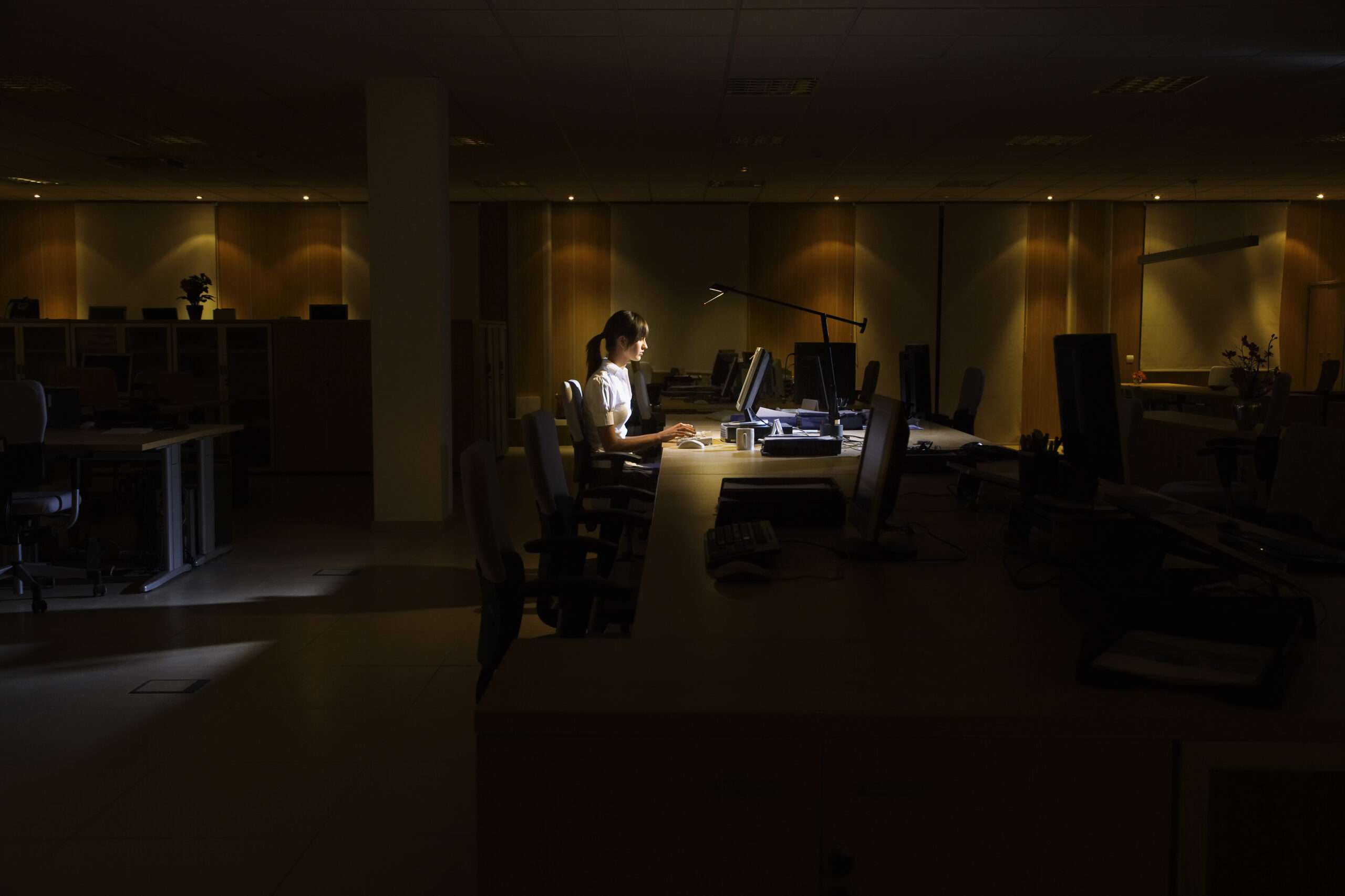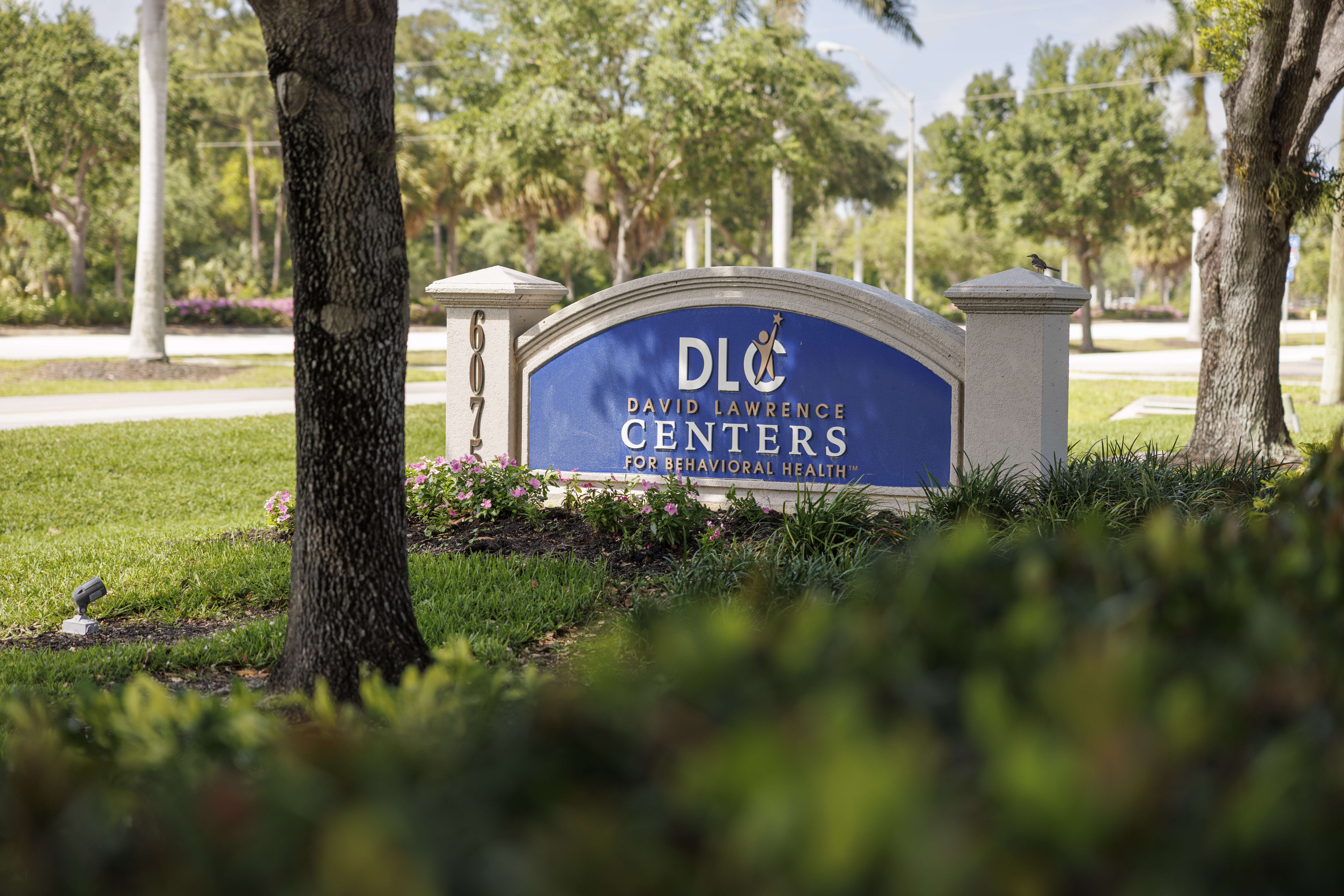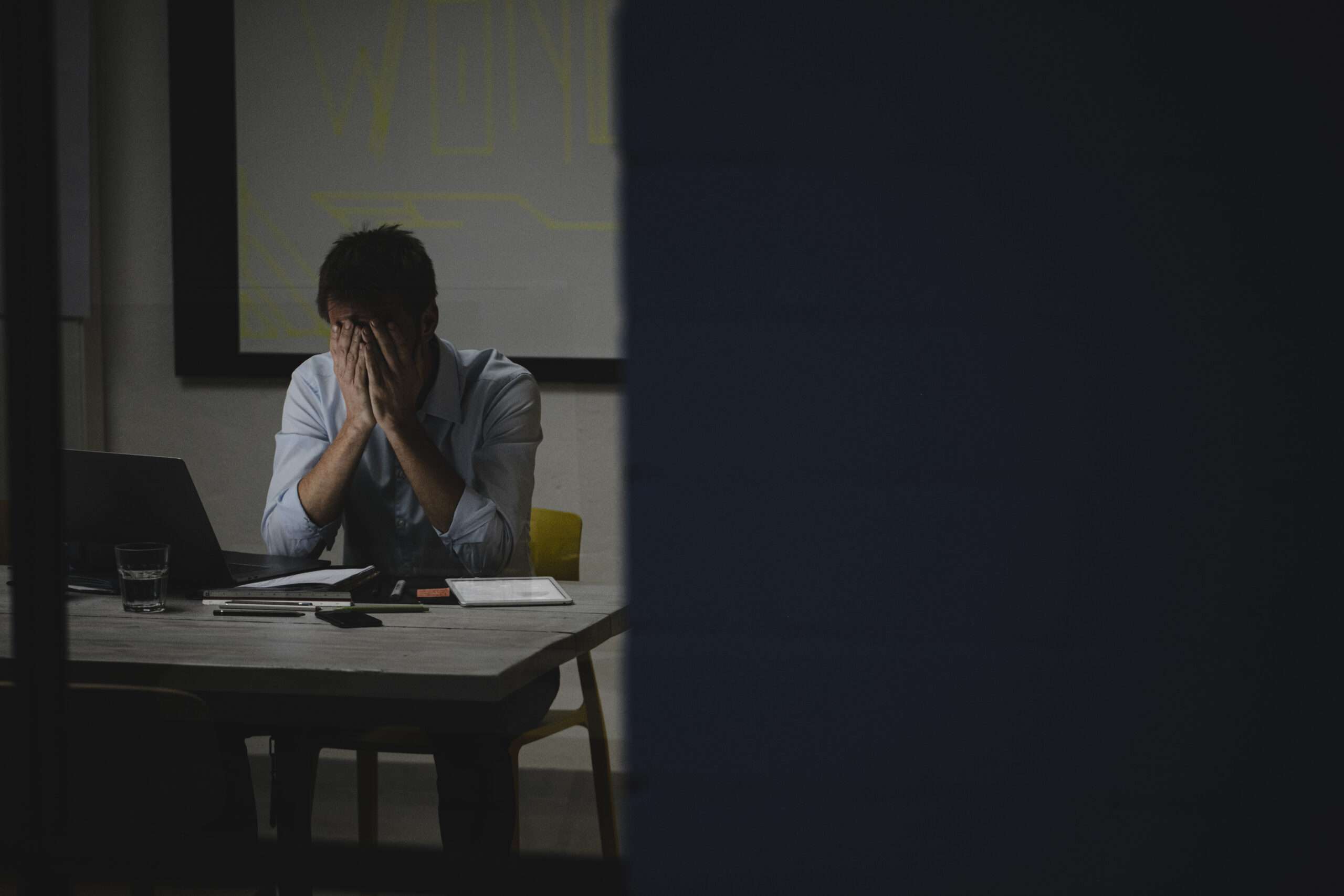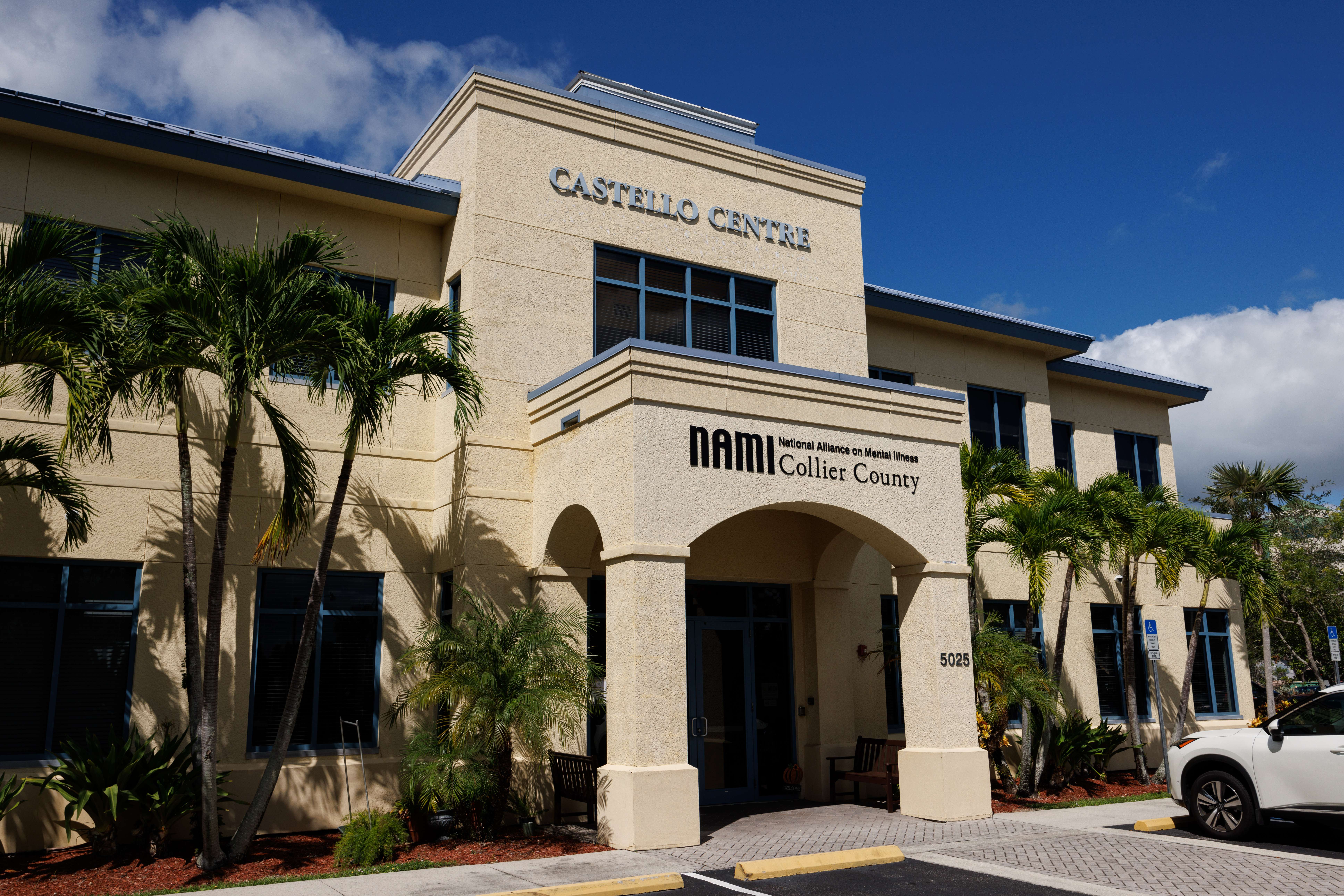Every day people show up to work shouldering the effects of mental health conditions, putting the workspace in a unique position of needing to address a community in crisis for the sake of running a successful business.
In Southwest Florida, the mental health crisis is multifaceted, and exists alongside a housing shortage that exacerbates the problems for employees and employers alike.
Laying out the factors that contribute to the problems paints a bleak picture of the state of our collective mental health. However, comprehensive plans to improve mental wellness are in the works at communities, corporations and nonprofit organizations—all of which offer hope.
Statistics indicate that one in four adults experience a form of mental illness, and the numbers are even greater for children, reports the Naples-based David Lawrence Centers for Behavioral Health. Combined, that indicates a very strong probability that almost any one of us is either experiencing a mental illness, or knows or is caring for someone who is. Those people show up to work, when they can, with these illnesses and responsibilities in an environment that often does not make space for them.
Meanwhile, mental wellness is profitable. Perhaps nothing affects us and our productivity more. Behavioral health professionals in Collier and Lee counties, as well as across the U.S. and around the world, are increasingly offering programs that support employers seeking to improve mental wellness at work.
For every $1 spent on mental wellness in the workplace, approximately $4 is returned in productivity, according to reports by the U.S. Department of Labor’s Occupational Safety and Health Administration.
One Mind at Work, a global initiative to improve mental health at work, reported even better returns on investment for depression, with a $6 return in productivity for every $1 spent.
“Employers have a tremendous opportunity to improve quality of life for their employees and broader communities, and play a critical role in promoting mental health solutions,” says Garen Staglin, co-founder of One Mind and One Mind at Work.
The Staglin family is a significant partner of the Naples Children and Education Foundation; they’ve raised millions for the Naples Winter Wine Festival festival. Outside Naples, the Staglin Family Vineyard has raised more than $1 billion for charitable causes, including through One Mind’s Music Festival for Brain Health, with the 30th annual event scheduled Sept. 7 in Napa Valley.
The great generosity by some families, including a $10 million gift in late January by the Bill and Julia Van Domelen Foundation to DLC, offers hope for addressing the mental health crisis in Southwest Florida.
Meanwhile, leaders in the field of brain science, mental health and business management are finding solutions that work.
 A survivor’s story
A survivor’s story
“One Mind started in 1995 in response to my family’s shared experience of my schizophrenia diagnosis in 1990 at age 18,” says Brandon Staglin, president of One Mind. “It was an extremely dark and scary time for my family and me.”
To his way of thinking at the time, “If I made any moral mistake, I would be in Hell. I was on edge all the time worried about this,” he recalls.
With treatment, he was able to recover.
The Staglin family founded One Mind, which advances research to improve diagnostics and treatments for brain health conditions while dismantling stigma and discrimination through education and media. They launched One Mind at Work in 2017, after Staglin experienced a relapse that left him unemployed and without a means to come back to his job at a satellite engineering firm in Silicon Valley, he said.
“I got the job easily. I wasn’t open about schizophrenia. I was afraid to be fired, stigmatized or both,” Staglin recalls.
But symptoms started coming back. “It’s not something you can just bootstrap,” he says.
The fear and stigma are barriers to care and recovery. “If [the environment] was more supportive and more open, I might have felt more forthcoming and gotten help for it sooner,” Staglin says.
Now, he puts the strengths gained from experiencing schizophrenia and its recovery to work as president at One Mind. Discipline, compassion, resilience and patience are some of the strengths he’s gained from schizophrenia and recovery, he said.
Professionals in some fields experience more stigma than others. “Nurses, lawyers and doctors can’t be open about mental health challenges,” Staglin says.
There is still a lot of stigma and discrimination in these fields, local mental health professionals agreed. Even to be open about stress is a risk for many professionals. “It just doubles down on their difficulties,” explains Staglin.
 Hope for change
Hope for change
“There is a growing interest in workplace mental health the past seven to eight years,” Staglin says. “There are corporate leaders being open about their experiences and becoming comfortable, which is a rolling snowball growing openness about mental health. This is great to see.”
Despite all the difficulties during the COVID-19 pandemic, one potentially positive outcome is that it prompted more discussion of mental health in the workplace. Some mental health problems, such as depression and anxiety, had reduced stigma throughout and following the pandemic, mental health officials reported.
“It created a lot of data and inspired us to collect more data,” Staglin says.
More than 110 companies and 20 nonprofit partners are part of One Mind at Work, creating mental health support for the people in their organizations, said Executive Director Christina McCarthy. These include companies such as Bank of America and Johnson & Johnson, as well as smaller businesses, said Staglin.
“The business community gets a bad rap for paying lip service to this work,” said McCarthy.
However, One Mind at Work finds that the CEOs and human resource teams of the organizations that are coming to them are earnest in their approach to creating mentally supportive work arrangements backed by data, McCarthy said.
 Focus on Southwest Florida
Focus on Southwest Florida
The nation overall is experiencing a mental health crisis; Florida’s crisis is even more severe and Southwest Florida statistics are bleaker still.
“Mental health does not discriminate by zip code,” says Beth Hatch, CEO of the National Alliance on Mental Illness of Collier County.
Whether Port Royal, Fort Myers Beach or Sanibel, mental illness is prevalent, she said. What’s staggering is that in one of the nation’s wealthiest areas, mental health statistics are among the worst.
A shortage of mental health professionals is reflected in a nationwide clinicians-to-individuals ratio of 300:1; Florida’s ratio is 550:1 and Collier County’s is 930:1, DLC reported.
Further, on a national level, approximately one in five adults will experience a mental health problem each year, while in Collier County, that number is one in four adults.
The socioeconomic divide and increasing wealth gaps add to the stressors contributing to poor community mental health in Southwest Florida, said Jessica Liria, prevention and education manager with DLC.
“Add together the effects of COVID, political tension, hurricanes, financial struggles, housing and new homelessness—it’s an incredibly difficult time here,” says Liria.
With community and mental health support, these challenges can be worked through, she said.
Paul G. Simeone, former vice president and medical director of Lee Health’s behavioral health division, reported in a media release that according to the Anxiety and Depression Association of America, 70% of American adults say they’re stressed or anxious every single day. About one-third of them report having anxiety or panic attacks, he added.
“And since mental health disorders are medical problems—just like cancer or diabetes—available treatments have been studied, improved and deliver consistent results,” wrote Simeone.
Unfortunately, most will not receive treatment, he said.
The World Health Organization reports that approximately 77% receive treatment. Stigma and the shortage of mental health professionals are among the reasons treatment is not received.
Confronting the stigma
“Quite simply, stigma is the negative attitude and belief that makes us fear, reject, avoid and discriminate against people with mental illnesses,” says Simeone, who has since taken on a leadership role within the May Institute, a national nonprofit organization offering supportive technology and services for nervous system, brain health and other needs.
This stigma is among the contributors to people with mental health conditions being perceived as dangerous even though they are more likely to be victims of violence than to commit it; are less likely to be hired; are less likely to have safe housing; are often criminalized and experience fear of rejection preventing them from pursuing opportunities, including treatment, according to NAMI reports.
“In all situations, we should be able to talk about mental health,” says Liria. “We need a supportive, educated and engaged community with people who understand what the challenges are and do not bring judgment to that.”
There has been progress in reducing stigma through education of the younger generation. However, some mental illnesses continue to be more stigmatized than others.
“Almost everyone has empathy for autism; it’s OK to talk about that. No one is saying, ‘We have to help this family who has a person experiencing bipolar [disorder] in the household.’ We have to get to that,” Hatch says.
The human condition may need more acceptance, as well.
“It’s somewhat paradoxical. There is a healthy range of emotions that require more acceptance,” says Alex Conrad, mental health specialist at Elite DNA Behavioral Health in Estero. “Grief, loss, depression, anxiety are normal human emotions. I think people have begun to feel and talk to each other as if it’s not OK to experience these things. It’s OK if one day you’re sad. It’s OK if you’ve had a loss and you experience grief.”
 Costs of mental health issues at work
Costs of mental health issues at work
The American Psychiatric Association reported that low well-being costs $322 billion in employee turnover and lost productivity, as found in a 2022 Gallup Wellbeing and Workplace study published by Workhuman Press.
What we do at work has a significant effect on individual and community wellness and quality of life.
“If I’m in my physical workforce for 40 hours per week, I’m around those people and in that setting more than anyone or anywhere else,” says Liria.
Approximately 25% of workers report that their job is their No. 1 stressor in their life, she added.
Meanwhile, 69% of people report to the APA that their managers affect their mental health more than their spouses, said Emma Jellen, associate director of the American Psychiatric Association Foundation’s Center for Workplace Mental Health.
Quiet quitting and presenteeism
Terms such as quiet quitting and presenteeism are used to describe when employees show up to work but are disengaged and lack productivity.
“Sometimes, it’s not just the workplace that’s the challenge, but often there are ways to boost engagement and mental wellness at work,” says Liria.
The American Productivity Audit estimated that presenteeism costs the U.S. economy $150 billion in lost productivity every year, according to reports published in October 2023.
Effects of COVID-19 and long COVID
There has been a 67% increase of workers reporting stress and burnout since the pandemic, Liria said.
Fatigue and brain fog are reported more than ever, with medical and mental health professionals in some level of disagreement of whether the causes are stress, vaccines or the long-term effects of the coronavirus. Though it’s unknown, likely, it’s a combination of them, said Liria.
Increased discussion about mental health and the workforce has resulted from the pandemic, and flexibility in working hours is one of the most appreciated benefits employers can offer, as well as allowing some remote work time, when applicable, said Liria.
The spread of social isolation
Disconnection is happening globally with people spending more time on social media and on devices than outside with other people and nature. The COVID-19 pandemic exacerbated isolation and many people are still recovering from that, mental health professionals have reported. Meanwhile, locally and nationally, political division has separated people.
Disconnection is especially potent in Florida, said Hatch, as more people live here without family than in most places. This minimizes their support system and increases the likelihood of mental health problems associated with isolation.
Housing and economic challenges
Housing is a critical problem affecting mental health in Collier and Lee counties; perhaps the biggest problem. “It’s not just a poor person’s problem,” Conrad says. “We are one of wealthiest counties on planet Earth. The fact there is anyone without housing is disturbing to me.”
Due to the stress caused when basic needs are not being met or are strained due to lack of housing, mental health and addiction recovery are delayed and mental health problems get worse, Conrad said.
When you think of Maslow’s Hierarchy of Needs, this makes sense, he said. Housing is represented at the base of the pyramid, whose two bottom—i.e., most important—tiers are physiological needs, then safety and security.
Until we meet these housing needs in Southwest Florida, the community’s mental health and addiction crisis cannot be solved, Conrad said: “People are on the cusp of hopelessness.”
Transitional housing is needed to help people build sober living practices in supportive environments. Veterans and other people recovering from mental health problems also benefit from transitional housing. Meanwhile, it’s challenging to recruit qualified therapists in a community where the housing costs are too high, or the quality of affordable housing is too low to sustain a healthy lifestyle.
To put it in the simplest terms, there is a great need for housing that will solve and prevent many problems, Conrad said.
Worse with time
Even with good intentions toward mental health, insurance often doesn’t cover it; people cannot afford to get appropriate placement; they’re not working with a therapist because mental health professionals have waiting lists of 6 months to a year; and many people can’t just take a stroll through the woods and decompress, either due to time constraints or lack of access, Conrad explained.
Increasing and long-term economic stress is also part of the mental health crisis, officials report.
“Toxic stress is a real thing. It’s developed over time,” says Hatch. “It’s not something you are born with. It’s because of experiences that lead to it.”
In the midst of these crises, which include housing, mental health and addiction, young people are developing their view of the world as safe and supportive or not, which will have a significant long-term effect on them and the next generation.
 Mental health across generations
Mental health across generations
There are more generations in the workforce than ever. They handle mental health differently and are motivated differently. Many older adults remain in the workforce because their retirement income does not cover the cost of living in Southwest Florida, said Liria. These include baby boomers, born from 1946 to 1964, and to some extent, the Silent Generation who came before them.
“They’re in financial hardship and experiencing the stress of a fast-paced workplace heavily reliant on relatively new technology,” Liria says.
According to studies, this age group is motivated by security.
Generation Z is loosely described as those born between 2000 and 2012, although sources differ on those years. Millennials (sometimes called Generation Y) are often described as those born between 1981 and 1996. These younger generations are more likely to be motivated by opportunities to work independently and will not stay where workplace mental health is not a priority, according to studies published by the National Institutes of Health.
Younger people are more likely to discuss and prioritize mental health and report their mental health challenges, according to data published by the American Psychological Association.
Mental illnesses, such as depression, remain more stigmatized in older generations, including baby boomers and Generation X, the latter of which is often referring to children of the 1970s and early 1980s.
Stigma seems to decrease in younger people, in part due to education, mental health professionals report.
Regardless of generation, a 2021 survey on workplace mental health published by Calm.com found that 76% of respondents indicated mental health benefits are a critical aspect of evaluating a new job.
 Tools for employers
Tools for employers
With the cost of hiring and training a new employee ranging between $4,000 and $20,000 in most cases, according to Indeed, there is motivation to create positive work environments and support mental health in the workplace whenever possible.
David Lawrence Centers offers no- and low-cost programs, including Mental Health First Aid, which is a training on common mental health challenges, warning signs, action plans and resources.
“When people are trained, they’re more likely to understand how to approach a situation with an employee,” says Liria.
These trainings are offered by DLC throughout Southwest Florida. The training can be offered at no cost due to a grant from the Substance Abuse and Mental Health Service, said Jamie Murphy, a community education specialist with DLC.
The training is approximately six hours with time spent online and in-person. Completion allows people to communicate more effectively and offer resources related to improving mental health, including self-care or professional referrals.
Incorporating wellness into the day—including lunch breaks, stretching at the desk, getting outdoors and allowing employees to connect with discussions about topics outside of work—builds connection and boosts physical and mental wellness, Liria suggested. Healthy food on hand can be a tool for promoting mental wellness and alertness, improving productivity, she added. Breaking up the monotony of someone’s role is another relatively easy way for an employer to improve mental wellness among employees, mental health professionals said.
Employers can help to foster a supportive work environment. “If you’re telling employees to ‘Check your emotional baggage at the door when you walk in because you need to be productive,’ in many cases, that is impossible,” says Liria.
“Employers and colleagues don’t need to become mental health professionals, by any means. There’s a humanity in hearing how someone is doing, and fostering an environment in the workplace that everyone is connected.”
Employee recognition and mental health coverage are ways employers can improve mental wellness. Ensuring employees know about the benefits and how to use them is key to getting their full value, said Jellen. But many employees report not using their benefits because they’re too time-consuming, confusing or cumbersome.
Explaining how to use benefits as part of employee onboarding will improve their effectiveness.
 Mental health skills for workers
Mental health skills for workers
Of the professions locally, other than mental health professionals, justice workers have among the most comprehensive mental health and substance abuse training. For others, Mental Health First Aid offered online and in-person is one way community members learn how to skillfully support one another. NAMI and DLC offer other trainings to boost mental health skills, as well. Lee County Health Department also offers Mental Health First Aid training. NARCAN, a nasal spray to prevent overdose death from opiates and opioids, is available through these organizations at no cost.
Self-care practices are the most accessible tools to most of us.
“Keeping positive mental health takes effort,” says Liria.
Self-care looks different for everyone, she added. For some people, it means exercising and meditation to begin each day. For almost everyone, mental health will improve with a healthier diet, consistent sleep, regular hygiene, cleanliness and regular exercise. Time outdoors in nature, minimizing social media, deep breathing, affirmations and social time improve mental health.
When more help is needed, there are community resources available, including those listed on page 40.
 Links to resources
Links to resources
David Lawrence Centers for Behavioral Health offers different presentation types for employees and employers. DLC is in the midst of a $144 million expansion as part of a comprehensive plan to address the multifaceted mental health crisis in Southwest Florida.
NAMI Collier and NAMI Lee, Charlotte and Hendry Counties also offer programs for businesses, HR teams and employers.
“Let us come in and help give you ideas. Not just to put a sticker or plaque on the wall. Be one of the first to really step up. In the long term, it will come back to you at every level,” Hatch says.
While it can be challenging for employers, it is worth it, mental health professionals report.
“It can be overwhelming for small- to medium-sized businesses. We don’t have to do this alone,” says Staglin. “We can do this together.”
One Mind at Work is a California-based global network helping employers improve mental health at work backed by data. onemindatwork.org
David Lawrence Centers for Behavioral Health, a Naples-based organization, provides lifesaving and life-changing behavioral health care services to all those in need in Collier County. davidlawrencecenters.org
Lee Health Behavioral Health Center provides mental health support in Lee County. leehealth.org
For the National Suicide and Crisis Lifeline, call or text 988. 988lifeline.org
National Alliance on Mental Illness, offering social, emotional and behavioral health support, has local organizations in Collier and Lee counties, including namicollier.org and namilee.org, which serves Lee, Charlotte and Hendry counties.
Dialing 211 in Collier County and colliercares.org connect people to community resources, including housing, transportation, mental health, medical health, childcare, elder care, veterans’ networks and other supports.





